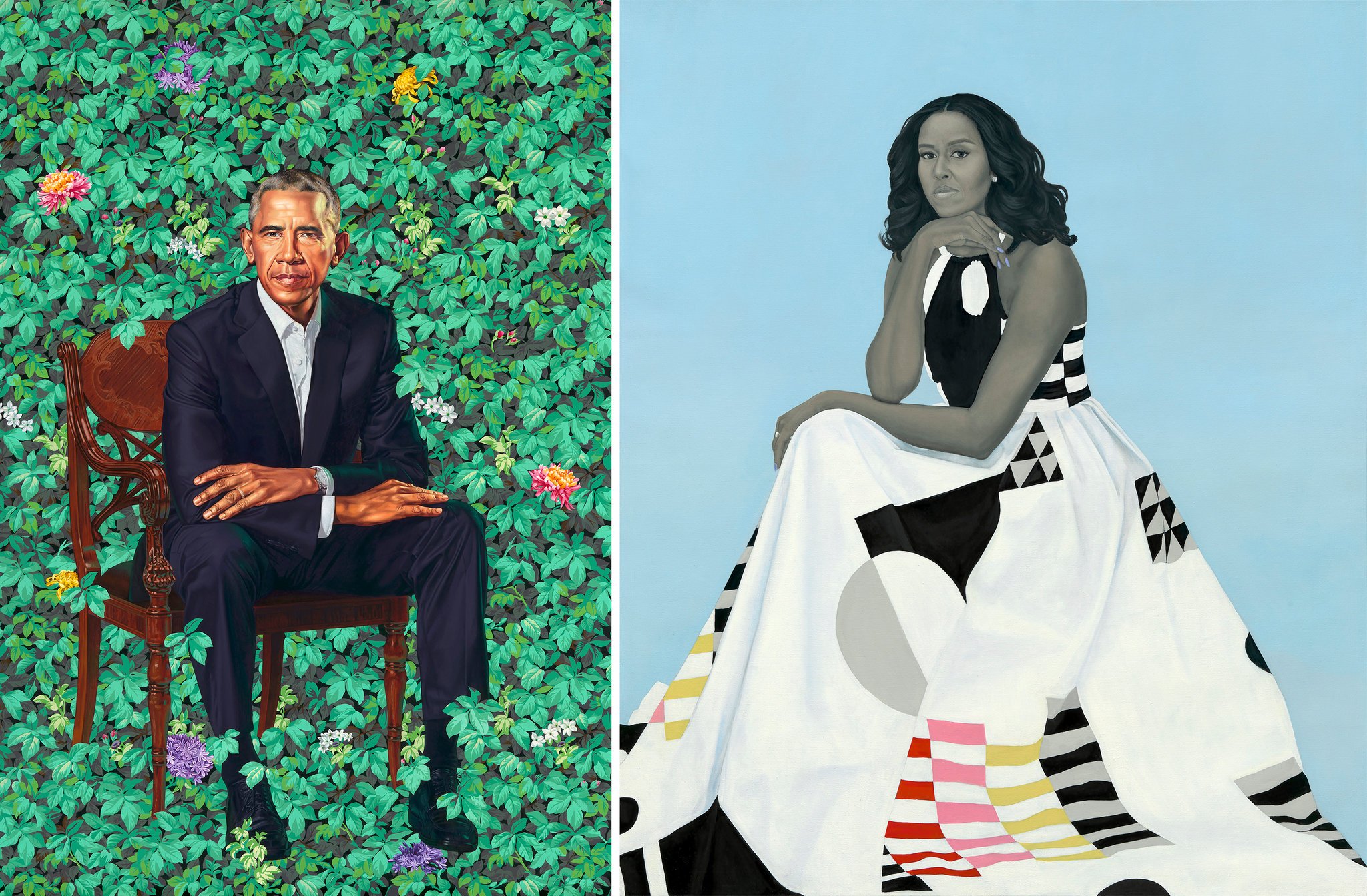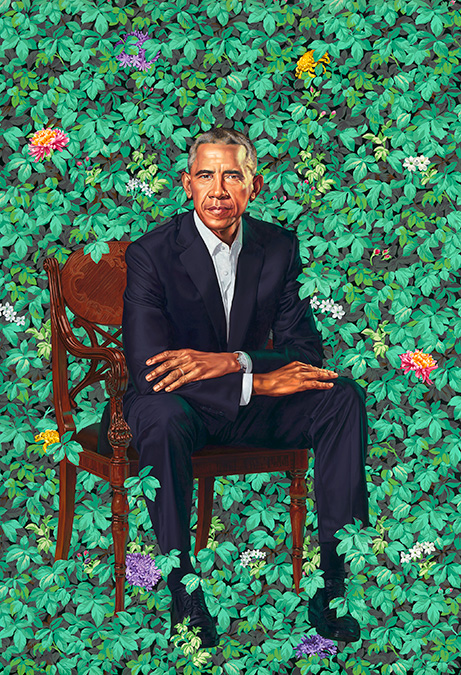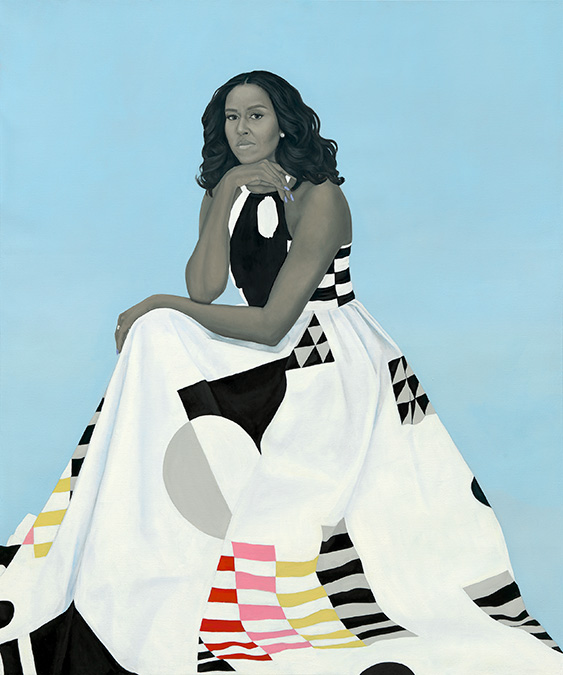The Obama Portraits and the History of African American Portraiture
“We’re still trying to express our identity… when we do see ourselves we’re sort of taken aback.”


The National Portrait Gallery in Washington D.C. unveiled the official portraits of Barack and Michelle Obama this week. The large paintings were crafted by Kehinde Wiley and Amy Sherald, respectively, and were the first presidential portraits in the gallery painted by African American artists.
They are stunning works unlike any other presidential portrait.
Amy Sherald’s grey-toned depiction of the former first lady is offset by a modern gown and blue backdrop. Kehinde Wiley’s portrait of President Obama speaks to Wiley’s hyper-real style, with the former president sitting in front of a wall of greenery and flowers, gently growing around his legs and shoulder. Wiley is also the artist behind one of the Detroit Institute of Art’s most memorable works, called “Officer of the Hussars”, which shows a young and modern African American man atop a white horse rearing as a Napoleonic steed.
There has been some criticism, especially on social media, that the portraits are odd, and that Sherald’s painting doesn’t particularly look like Michelle Obama.

Valerie Mercer, curator of African American art at the DIA says she isn’t concerned with the facial detail on Sherald’s painting because art is about an artist’s impression of reality.
“[Impression] is very much what contemporary art is about,” Mercer tells Detroit Today host Stephen Henderson. “These artists were commissioned… because of how they work and a particular viewpoint.”
Mercer says African American portraiture is an evolving art in and of itself because of a complex history in America with rendered depictions of black people as racist caricatures. She says African American portraiture by black artists began in earnest during the Harlem Renaissance.
“We’ve had a long, somewhat difficult history with our portraits in this country,” says Mercer. “We’re still trying to express our identity… when we do see ourselves we’re sort of taken aback.”
A new take on portraiture was welcome by many art critics and fans alike.
Art historian Paul Staiti says the Obama portraits — full of color and unique concepts — are fresh and exciting in a field of generally staid presidential portraiture.
“[The portraits] are never going to do what everybody would like them to do,” says Staiti. “I appreciate that (the portrait of President Obama) is so full of color and it’s rich. And I like that there are flowers from all over the world and so it speaks to a kind of diversity that Obama embraced.”
To hear more from Mercer and Staiti on Detroit Today, click on the audio player above.
